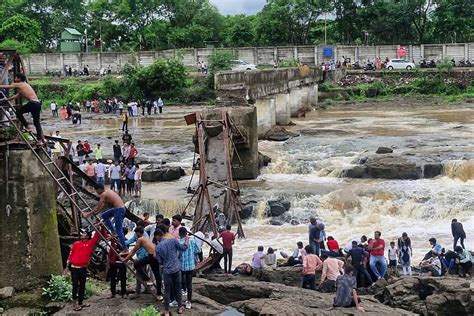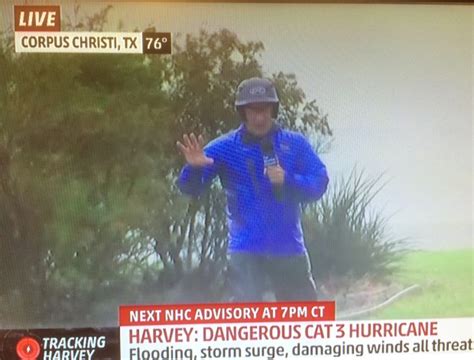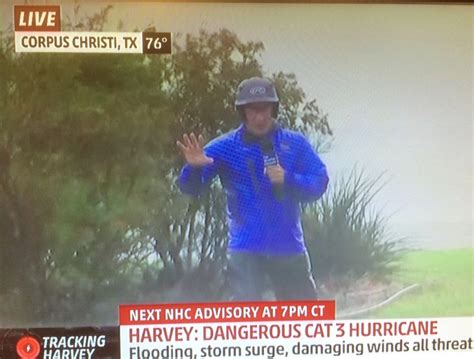
Two people are dead and dozens injured after a pedestrian bridge collapsed on Wednesday in a popular tourist area in Amsterdam, Netherlands, according to local authorities. The incident occurred in the town of Warmond, near Leiden, during the late afternoon, sending a significant number of people plunging into the canal below.
Emergency services, including ambulances, fire brigades, and divers, rushed to the scene to rescue those trapped in the water and provide medical assistance. The cause of the bridge collapse is currently under investigation.
The Incident
The collapse occurred at approximately 5:30 PM local time in Warmond, a picturesque town known for its canals and waterways, which is a frequent destination for tourists and locals alike. The bridge, a pedestrian crossing constructed primarily of wood, spanned a narrow canal in a busy area of the town. Eyewitnesses reported hearing a loud cracking sound before the structure gave way, sending pedestrians into the water.
“We heard a cracking sound and then suddenly the middle of the bridge just collapsed,” said a local shopkeeper, who declined to be named. “People were screaming, and there was a lot of confusion. It was a horrible scene.”
Initial reports suggest that the bridge was heavily loaded with people at the time of the collapse. The warm weather and the time of day, coinciding with the end of the workday and school day, likely contributed to the high volume of pedestrian traffic.
Rescue Efforts
The emergency response was swift and coordinated. Within minutes of the collapse, first responders arrived on the scene. Ambulances and fire trucks lined the canal banks, while divers entered the water to search for and rescue those who were trapped or injured.
“Our priority was to get everyone out of the water as quickly as possible,” said a spokesperson for the local fire department. “The water was cold, and we knew that time was of the essence.”
Rescuers used inflatable boats and ladders to reach those who were struggling in the water. Paramedics provided immediate medical attention to the injured, triaging patients based on the severity of their injuries. Those with more serious conditions were transported to nearby hospitals for further treatment.
The rescue operation continued for several hours, with emergency services working tirelessly to ensure that everyone was accounted for. The operation was complicated by the narrowness of the canal and the presence of debris from the collapsed bridge.
Casualties and Injuries
As of the latest update, two people have been confirmed dead as a result of the bridge collapse. Their identities have not yet been released pending notification of their families.
Dozens of others were injured, ranging from minor cuts and bruises to more serious fractures and hypothermia. At least ten people were reported to have sustained critical injuries and were being treated in intensive care units at various hospitals in the region.
“We are deeply saddened by the loss of life and the injuries sustained in this tragic incident,” said the mayor of Leiden, Peter van der Velden, in a statement. “Our thoughts are with the families of the victims and all those who have been affected.”
Investigation
Authorities have launched a full investigation into the cause of the bridge collapse. The investigation will focus on several key areas, including the structural integrity of the bridge, its maintenance history, and whether it was overloaded at the time of the collapse.
“We need to understand exactly what happened and why,” said a spokesperson for the local police. “We will be examining all possible factors, including the design and construction of the bridge, the materials used, and any previous inspections or repairs.”
Investigators will also be interviewing witnesses and reviewing CCTV footage from nearby businesses to gather as much information as possible. Experts in structural engineering have been brought in to assess the wreckage and determine the cause of the collapse.
The investigation is expected to take several weeks, or even months, to complete. Once the cause of the collapse has been determined, authorities will take steps to prevent similar incidents from happening in the future.
Reactions and Condolences
The bridge collapse has sent shockwaves through the community of Warmond and beyond. Local residents expressed their grief and disbelief at the tragedy.
“This is a terrible tragedy,” said one resident. “That bridge was a popular spot for tourists and locals alike. I can’t believe it’s gone.”
Condolences have poured in from across the Netherlands and around the world. Politicians, community leaders, and ordinary citizens have expressed their sympathy for the victims and their families.
“My heart goes out to the people of Warmond and to all those who have been affected by this devastating event,” said Prime Minister Mark Rutte in a statement. “The government will do everything possible to support the victims and their families and to ensure that a thorough investigation is conducted.”
The local municipality has established a support center for those who have been affected by the bridge collapse. Counselors and social workers are available to provide emotional support and assistance to victims, their families, and the wider community.
Infrastructure Concerns
The bridge collapse has raised concerns about the safety and maintenance of infrastructure in the Netherlands. While the country is generally known for its well-maintained infrastructure, some experts have warned that aging bridges and other structures may be at risk of collapse if they are not properly inspected and maintained.
“This incident should serve as a wake-up call,” said a professor of civil engineering at Delft University of Technology. “We need to invest more in the maintenance and inspection of our infrastructure to prevent similar tragedies from happening in the future.”
The Dutch government has announced that it will conduct a review of the safety of all bridges and other public structures in the country. The review will focus on identifying any potential risks and implementing measures to mitigate those risks.
Historical Context of Warmond and Its Bridges
Warmond, a charming village nestled within the municipality of Teylingen, South Holland, boasts a rich history and a unique relationship with its waterways. For centuries, canals and bridges have been integral to the town’s identity, facilitating trade, transportation, and daily life. Understanding this historical context sheds light on the significance of the collapsed bridge and the community’s profound sense of loss.
Originally a small agricultural settlement, Warmond gradually developed its network of canals, which were primarily used for water management and the transport of agricultural goods. As the village prospered, bridges became essential for connecting different parts of the community and allowing people to navigate the waterways with ease.
Many of Warmond’s older bridges are historic structures, some dating back several centuries. These bridges are not only functional but also serve as landmarks, contributing to the town’s picturesque character. They represent a tangible link to the past, reminding residents of their heritage and the importance of preserving their built environment.
The collapsed pedestrian bridge, while likely of more recent construction, was undoubtedly part of this network of crossings that define Warmond. As a tourist destination, the town relies on its bridges to provide access to key attractions, businesses, and residential areas. The collapse has therefore disrupted both the physical and social fabric of the community.
The incident also raises questions about the long-term maintenance and preservation of Warmond’s infrastructure. As a historic town with many aging structures, regular inspections and timely repairs are crucial for ensuring the safety of residents and visitors alike. The investigation into the bridge collapse will hopefully provide valuable insights into the challenges of maintaining such infrastructure and inform future strategies for protecting Warmond’s heritage.
The Role of Tourism in Warmond
Tourism plays a significant role in the economy of Warmond. The town’s canals, historic buildings, and scenic landscapes attract visitors from around the world, contributing to the local economy and supporting numerous businesses. The collapsed bridge was located in a popular tourist area, making the incident even more devastating.
The aftermath of the collapse is expected to have a negative impact on tourism in Warmond. The closure of the bridge will disrupt pedestrian traffic and make it more difficult for tourists to access key attractions. The negative publicity surrounding the incident may also deter some visitors from coming to the town.
The local tourism industry is working to mitigate the impact of the bridge collapse. Efforts are underway to provide alternative routes for pedestrians and to reassure visitors that Warmond is still a safe and enjoyable destination. However, it is likely to take some time for the tourism industry to fully recover from the incident.
The Broader Impact on Dutch Infrastructure Policy
The bridge collapse in Warmond has implications that extend beyond the immediate tragedy. It highlights the importance of infrastructure maintenance and inspection and could lead to changes in Dutch infrastructure policy.
The Dutch government has already announced that it will conduct a nationwide review of the safety of all bridges and other public structures. This review will involve a thorough assessment of the structural integrity of each structure, as well as an evaluation of its maintenance history. The review will also consider the impact of climate change on infrastructure, including the increased risk of flooding and extreme weather events.
Based on the findings of the review, the government may implement new policies and regulations to improve the safety and resilience of Dutch infrastructure. This could include increased funding for maintenance and repairs, stricter inspection standards, and the development of new technologies for monitoring the condition of bridges and other structures.
The bridge collapse in Warmond serves as a stark reminder of the importance of investing in infrastructure and ensuring that it is properly maintained. By learning from this tragedy, the Netherlands can take steps to prevent similar incidents from happening in the future and protect the safety of its citizens and visitors.
Legal Ramifications and Liability
The collapse of the pedestrian bridge in Warmond will likely have significant legal ramifications. An investigation will need to determine the cause of the collapse and whether negligence played a role. Depending on the findings, various parties could face legal action, including:
- The Municipality of Teylingen: As the local authority responsible for maintaining the bridge, the municipality could be held liable if it is found that they failed to properly inspect, maintain, or repair the structure.
- Construction or Engineering Companies: If the bridge collapse was caused by design flaws or substandard construction, the companies responsible for designing and building the bridge could face legal action.
- Inspection Companies: If the bridge was inspected by a third-party company, that company could be held liable if they failed to identify critical structural issues.
The victims of the bridge collapse and their families may have grounds to file lawsuits seeking compensation for their injuries, losses, and emotional distress. These lawsuits could allege negligence, wrongful death, or other claims. The legal proceedings could be complex and protracted, as the parties involved seek to determine liability and damages.
Furthermore, the incident could also lead to regulatory changes and stricter enforcement of existing regulations related to infrastructure safety. Government agencies may review their inspection protocols and maintenance standards to ensure that they are adequate to prevent future collapses.
The Psychological Impact on the Community
The bridge collapse in Warmond has had a profound psychological impact on the community. The tragedy has caused widespread grief, fear, and anxiety. Many residents are struggling to cope with the loss of life, the injuries sustained by their neighbors, and the disruption to their daily lives.
The psychological impact of the event is likely to be felt most acutely by those who witnessed the collapse or who were directly affected by it. These individuals may experience symptoms of post-traumatic stress disorder (PTSD), such as flashbacks, nightmares, and anxiety. They may also struggle with feelings of guilt, anger, and helplessness.
The community as a whole is also likely to be affected by the tragedy. The bridge collapse has shattered the sense of safety and security that many residents once felt. The incident has also created a sense of division and mistrust within the community.
To help the community cope with the psychological impact of the bridge collapse, local authorities have established a support center where counselors and social workers are available to provide emotional support and assistance. These professionals can help individuals and families process their grief, manage their anxiety, and develop coping strategies.
It is important for the community to come together and support one another during this difficult time. By sharing their experiences, offering comfort, and working together to rebuild their lives, the people of Warmond can overcome the challenges they face and emerge stronger from this tragedy.
Lessons Learned and Future Prevention
The bridge collapse in Warmond offers several important lessons that can help prevent similar tragedies from happening in the future:
- Importance of Regular Inspections: Regular inspections are essential for identifying potential structural problems before they become critical. These inspections should be conducted by qualified professionals who have the expertise to identify and assess potential risks.
- Thorough Maintenance and Repairs: Once structural problems are identified, it is important to address them promptly with thorough maintenance and repairs. Delaying repairs can exacerbate the problems and increase the risk of collapse.
- Load Capacity Management: Bridges have a maximum load capacity that should not be exceeded. It is important to monitor the number of people using a bridge at any given time and to take steps to limit access if necessary.
- Use of Durable Materials: The materials used to construct bridges should be durable and resistant to corrosion and other forms of degradation. Using substandard materials can shorten the lifespan of a bridge and increase the risk of collapse.
- Impact of Environmental Factors: Environmental factors such as weather, flooding, and climate change can have a significant impact on the structural integrity of bridges. It is important to consider these factors when designing, constructing, and maintaining bridges.
By learning from the bridge collapse in Warmond and implementing these lessons, governments and infrastructure managers can take steps to improve the safety and resilience of bridges around the world. This will help prevent future tragedies and protect the lives of citizens and visitors.
The Future of the Collapsed Bridge Site
The future of the collapsed bridge site in Warmond remains uncertain. The local municipality will need to decide whether to rebuild the bridge or to explore alternative options. The decision will likely be based on a number of factors, including the cost of rebuilding, the impact on traffic flow, and the wishes of the local community.
If the decision is made to rebuild the bridge, the new structure will need to be designed and constructed to meet modern safety standards. The design will also need to take into account the historical context of the area and the aesthetic preferences of the community.
Alternatively, the municipality could consider replacing the bridge with a different type of crossing, such as a pedestrian ferry or an underground tunnel. These options may be more expensive than rebuilding the bridge, but they could also offer advantages in terms of safety, accessibility, and environmental impact.
Regardless of the decision, it is important for the municipality to involve the local community in the planning process. This will ensure that the new crossing meets the needs of the community and that it is embraced by the residents of Warmond.
FAQ Section:
1. What caused the bridge collapse in Warmond, Netherlands?
The exact cause is under investigation. Authorities are examining the structural integrity of the bridge, its maintenance history, whether it was overloaded, the design and construction, the materials used, and any previous inspections or repairs.
2. How many people were killed and injured in the bridge collapse?
Two people have been confirmed dead. Dozens were injured, with at least ten people critically injured and treated in intensive care units.
3. Where exactly did the bridge collapse occur?
The collapse happened in Warmond, a town near Leiden, Netherlands. Warmond is known for its canals and is a popular tourist destination.
4. What actions have the authorities taken following the collapse?
A full investigation has been launched to determine the cause. Emergency services responded swiftly to rescue those trapped. A support center has been established for victims and their families. The Dutch government has announced a review of the safety of bridges and other public structures nationwide.
5. What are the potential legal ramifications of the bridge collapse?
The municipality of Teylingen (responsible for maintenance), construction/engineering companies (if design flaws are found), and inspection companies (if they failed to identify critical issues) could face legal action. Victims and their families may file lawsuits for compensation due to injuries, losses, and emotional distress.









